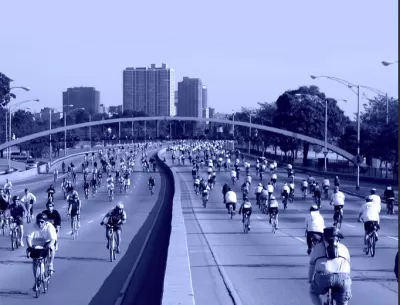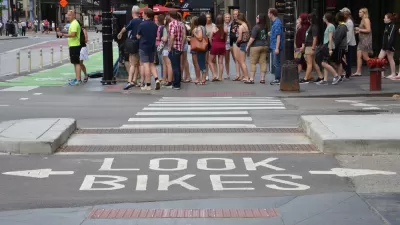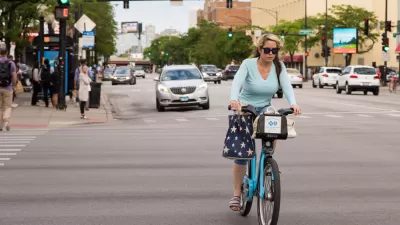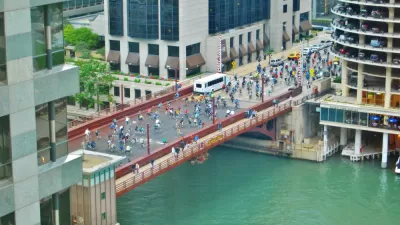The city, which has been slow to implement complete streets initiatives during the pandemic, promises closer collaboration with community groups to advance equity in transportation.

In a year when many cities used the pandemic as an opportunity to rethink public space and implement ambitious initiatives to improve walking and biking infrastructure, writes Courtney Courtney Cobbs, Chicago's progress on similar projects has been disappointingly slow. However, Cobbs hopes that a renewed focus on mobility justice and equity in the Chicago Department of Transportation (CDOT)'s Complete Streets division shows promise for the future of transportation equity in the city.
Although the agency suspended their quarterly bicycle and pedestrian advisory council meetings last year, a notice sent out in September announced CDOT's plans for a Transportation Equity Network to "develop closer relationships with communities and long-term strategies for mobility justice." To make walking and biking safe and accessible for Chicago's most vulnerable communities, Cobbs argues, the agency has to "make a concerted effort to increase the representation of women, gender-nonconforming individuals, Black and Brown folks, people with disabilities, and other marginalized people whose mobility needs have not been centered in previous transportation decisions" as well as decrease the power that car owners and individual aldermen have over the city's land use and transportation decisions. "Part of ensuring [transportation equity] means making sure the community engagement process centers those who have been missing from the decision-making process."
The Transportation Equity Network is one of two significant equity plans to focus on transportation in recent months. The city also released an Equitable Transit-Oriented Development policy plan in September 2020.
FULL STORY: Will CDOT’s new strategic plan be a turning point for equitable transportation?

Planetizen Federal Action Tracker
A weekly monitor of how Trump’s orders and actions are impacting planners and planning in America.

San Francisco's School District Spent $105M To Build Affordable Housing for Teachers — And That's Just the Beginning
SFUSD joins a growing list of school districts using their land holdings to address housing affordability challenges faced by their own employees.

The Tiny, Adorable $7,000 Car Turning Japan Onto EVs
The single seat Mibot charges from a regular plug as quickly as an iPad, and is about half the price of an average EV.

Seattle's Plan for Adopting Driverless Cars
Equity, safety, accessibility and affordability are front of mind as the city prepares for robotaxis and other autonomous vehicles.

As Trump Phases Out FEMA, Is It Time to Flee the Floodplains?
With less federal funding available for disaster relief efforts, the need to relocate at-risk communities is more urgent than ever.

With Protected Lanes, 460% More People Commute by Bike
For those needing more ammo, more data proving what we already knew is here.
Urban Design for Planners 1: Software Tools
This six-course series explores essential urban design concepts using open source software and equips planners with the tools they need to participate fully in the urban design process.
Planning for Universal Design
Learn the tools for implementing Universal Design in planning regulations.
Smith Gee Studio
City of Charlotte
City of Camden Redevelopment Agency
City of Astoria
Transportation Research & Education Center (TREC) at Portland State University
US High Speed Rail Association
City of Camden Redevelopment Agency
Municipality of Princeton (NJ)





























